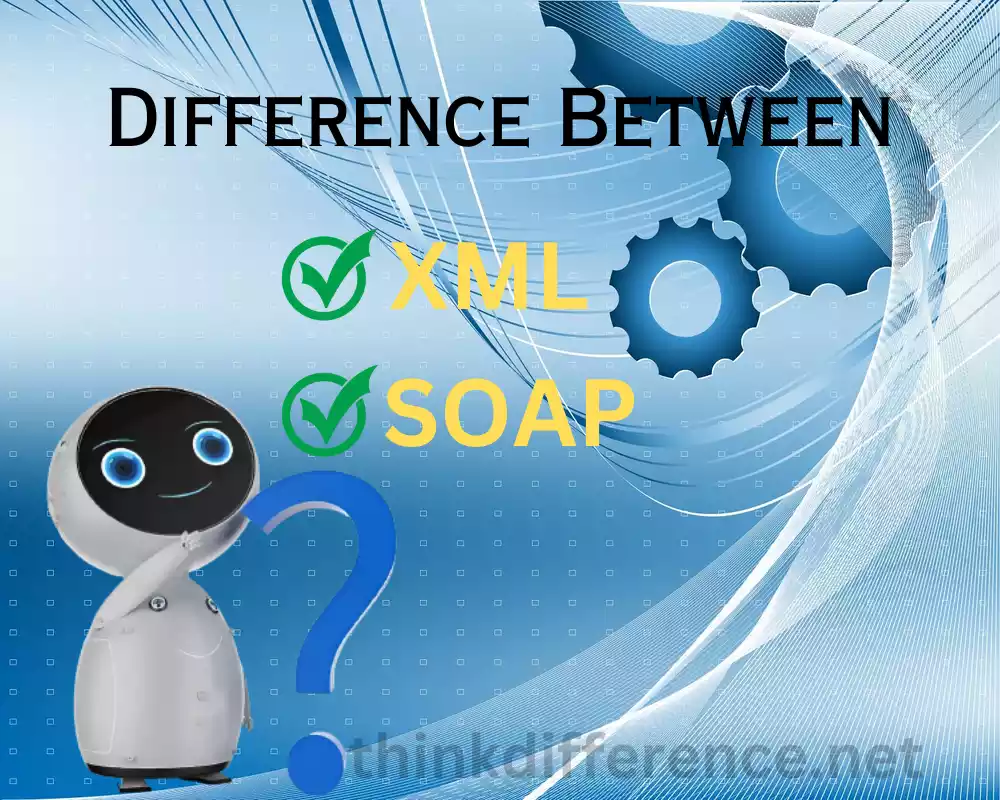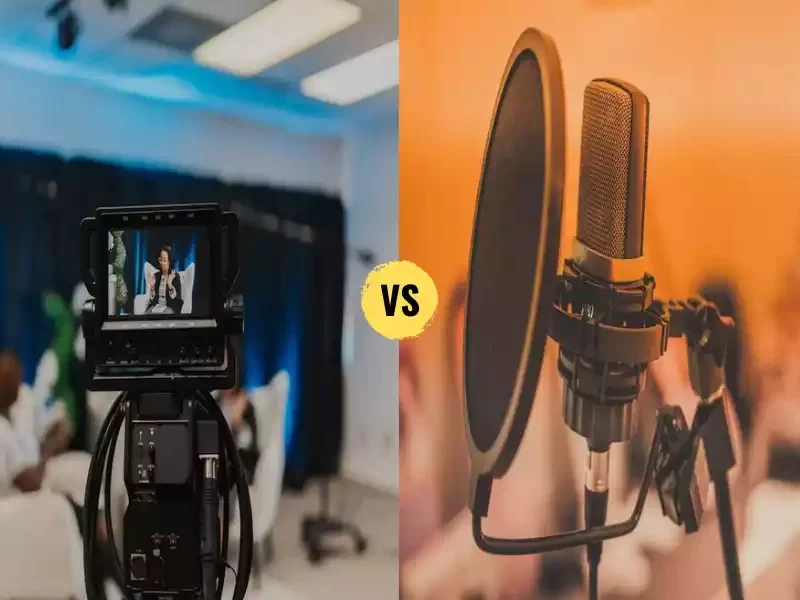XML and SOAP are key components in digital business systems, respectively. XML serves as an XML-based markup language which defines guidelines for encoded documents into formats which are both human- and machine-readable, while SOAP helps facilitate communications among applications across networks.
XML is an industry standard format for organizing and structuring data. This format facilitates data exchange among various parties in an easily navigable fashion. Offering an extensible framework with tags and elements to organize hierarchically hierarchical representation of information. As an indispensable element of Web development, data storage, as well as configuration files, its usage has grown over the years.
SOAP, as an interoperability protocol, facilitates communications among various platforms and systems by outlining rules for structured data exchange between them. Utilizing XML formatted messages for message formatting purposes and HTTP as transport protocol – SOAP has found wide use across web-based services for exchanging both data as well as remote procedure calls.
Understanding the differences between XML and SOAP are vitally important to architects and developers in creating web services as well as data exchange methods. This content outline explores what distinguishes each one by exploring its structure types, purposes, benefits and differences while offering advice when to employ each system in specific scenarios and emerging trends within web services development.
What is XML?
Extensible Markup Language, more commonly referred to by its acronym of Extensible Markup Language (XML), is an open and standard way of representing structured data in documents that is both machine readable and human readable. XML was initially developed as an open standard way to encode structured information.
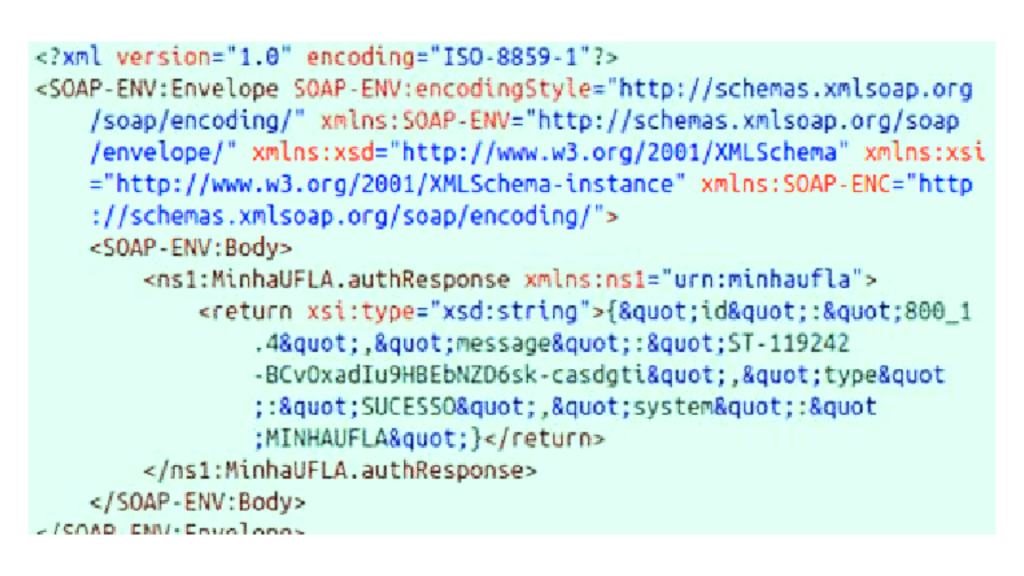
XML employs tags to distinguish elements within documents. Enclosed in angle brackets (>), these tags provide context and structure to data that’s nestled among them allowing complex relationships among various pieces of information.
Apart from tags, XML also supports attributes which provide more details about an element. Attributes typically represent their values using name-value pairs that can be added during tag opening of elements.
One of the primary features that makes XML stand out is its flexibility. Users are allowed to design custom tags and structures for documents, making XML suitable for various data formats and software systems. To further enable its adaptability, DTD and Schemas exist that define rules and restrictions regarding structure and content contained within an XML document.
XML documents can be processed and parsed by software programs, making them ideal for data exchange, storage and configuration purposes. As it’s independent from languages and platforms it facilitates interoperability among different systems and applications XML has found widespread usage both web development as well as industries including publishing, healthcare finance and publishing where structured data representation and exchange is crucial.
What is SOAP?
SOAP stands for Simple Object Access Protocol and serves to enable communication among programs via the internet. It outlines rules and principles for structuring, organizing and transmitting communications among components of software systems.
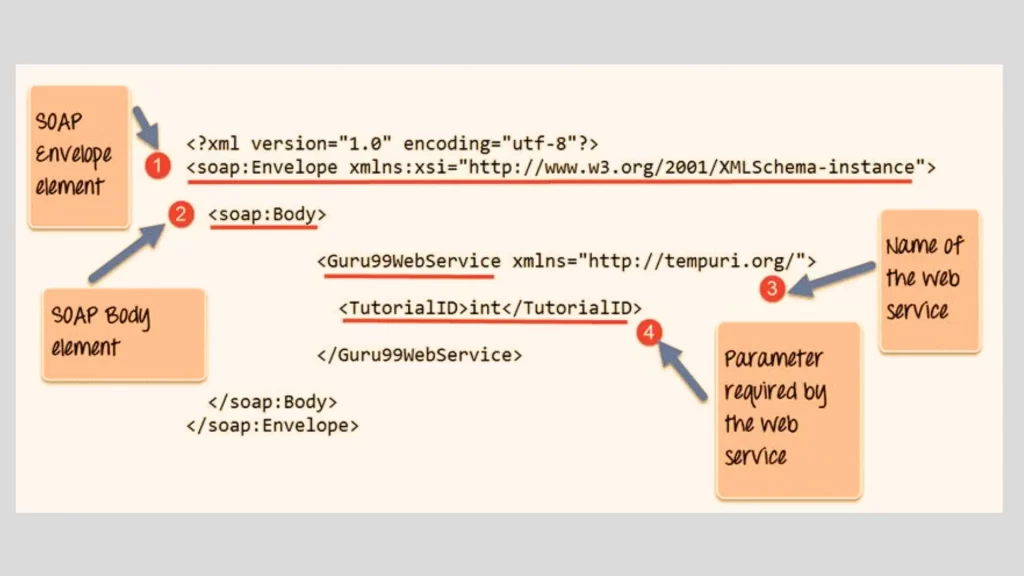
SOAP uses XML as its message format, offering an open and non-platform-dependent means of representing data. While HTTP is usually its transport protocol of choice, other transport protocols like SMTP or TCP may also be utilized.
The structure of a SOAP message consists of three main parts:
- Envelope: This is the outermost element of a SOAP message and defines the XML namespace for SOAP. It encapsulates the entire message and provides a container for the other elements.
- Header: The SOAP header is optional and contains additional information about the SOAP message. It can include data such as authentication credentials, encryption details or other application-specific information.
- Body: The SOAP body contains the actual payload of the message. It carries the data being exchanged between the sender and receiver. The body can contain any XML content, allowing for flexible data representation.
SOAP also defines a set of rules for processing errors and faults. If an error occurs during message processing, a SOAP fault can be generated and included in the response. This allows for standardized error handling and communication of exceptions between applications.
SOAP is commonly used in web services to enable communication and interoperability between different systems and platforms. An exchange system with a clearly-delineated framework for exchanging messages. It supports several operations, such as remote procedure calls (RPC) and request/response communications.
The benefits of SOAP include its language and platform independence, as well as its extensibility and support for security features. It has been widely adopted in enterprise-level systems and plays a crucial role in enabling integration between disparate applications and services.
Differences Between XML and SOAP
1. Purpose and Usage:
- XML: XML is a markup language designed for structuring and presenting hierarchical data structures in an accessible fashion. XML is flexible enough to accommodate many forms of organization that focus on data representation while offering adaptable frameworks to organize information efficiently.
- SOAP: SOAP stands for Structured Object Access Protocol and it enables applications on the internet to exchange structured data through structured calls on web services, thus providing interactions and communications among software components.
2. Structure and Syntax:
- XML: XML defines the syntax and rules for structuring data using tags, elements, attributes and nesting. Information presented using this format must be both human- and machine-friendly.
- SOAP: SOAP utilizes XML as its message format. It adds an additional layer of structure to XML by specifying the structure and elements of a SOAP message, including the envelope, header, body and optional fault elements.
3. Data Format and Content:
- XML: XML focuses on data representation and provides a general-purpose format for organizing and exchanging data. An infographic is an effective way of representing information such as dates, text and numbers hierarchically.
- SOAP: SOAP uses XML to structure the content of its messages. The data exchanged in SOAP messages is typically related to web service operations, such as function calls, request parameters and response data.
4. Transport and Protocol:
- XML: Although XML doesn’t outline an explicit method or protocol to exchange data, its format enables it to be utilized across many scenarios such as HTTP/FTP transfers and file storage systems.
- SOAP: SOAP (Simple Object Access Protocol): SOAP is a network protocol designed to outline how messages should be formatted, transmitted, and processed over the network. While HTTP often serves as its transport protocol of choice for SOAP use cases, other protocols such as RFC 822 support its use as well.
5. Implementation and Compatibility:
- XML: XML is a general purpose language which can be implemented across numerous programming platforms and languages. It has widespread support and is compatible with different systems and applications.
- SOAP: SOAP requires specific implementation and support from both the sender and receiver applications. It relies on the availability of SOAP libraries or frameworks in the programming language or platform being used.
Important to recognize is the fact that XML and SOAP don’t conflict, both can exist alongside one another without conflict. SOAP messages typically utilize XML while its use for non-web services purposes can vary. The choice between XML and SOAP depends on specific application needs as well as standard communication needs within context of data exchange.
Implementing XML and SOAP
Implementing XML and SOAP involves utilizing the appropriate technologies and tools to work with these standards. Here are the steps involved in implementing XML and SOAP:
XML Implementation:
- Define the XML Schema or DTD: Determine the structure and constraints for your XML data by creating an XML Schema or Document Type Definition (DTD). These specifications define the allowed elements, attributes and their relationships.
- Create XML Documents: Generate XML documents that adhere to the defined schema or DTD. You can use text editors or XML-specific tools to create and edit XML files.
- Parse and Generate XML: Implement XML parsers in your programming language of choice to read and parse XML documents. Libraries like DOM (Document Object Model) or SAX (Simple API for XML) provide applications with tools for parsing and manipulating XML data within their applications.
SOAP Implementation:
- Choose a Programming Language and Framework: Select a programming language capable of supporting SOAP implementation, such as Java,.NET Framework or Python. Use SOAP libraries or frameworks specific to your chosen language, such as Apache Axis, Apache CXF or WCF (Windows Communication Foundation).
- Define Web Service Operations: Determine the operations and methods that your SOAP web service will provide. Specify the input parameters and expected responses for each operation.
- Generate WSDL: Write or generate a Web Services Description Language (WSDL) file that describes the SOAP web service, including the operations, input/output messages and service endpoints.
- Implement the Web Service: Write the actual code for your SOAP web service, incorporating the defined operations and their functionality. Use this SOAP library to efficiently process and compose SOAP messages.
- Test and Deploy: Test the SOAP web service to ensure its functionality and interoperability. Deploy the web service to a web server or application server that supports SOAP-based communication.
Integration of XML and SOAP:
- Use XML for Data Representation: Within your SOAP messages, use XML to structure and represent the data being exchanged. Define XML elements and attributes to encapsulate the payload of your SOAP messages.
- Serialize and Deserialize XML Data: Convert data objects to XML format (serialization) when sending SOAP requests or receiving SOAP responses. Deserialize XML data back into objects at the receiving end.
- Validate XML against Schema: Ensure that the XML data adheres to the defined XML schema or DTD by performing validation checks during parsing or before processing the data.
Remember to consider security aspects, such as authentication, encryption and data validation, while implementing both XML and SOAP to ensure secure and reliable communication between applications.
Best practices for using XML and SOAP
When working with XML and SOAP it is vitally important that best practices be observed in order to guarantee reliable, stable, secure applications. Here are a few recommended techniques for using both together:
XML Best Practices:
- Use Semantic and Meaningful Tags: Choose descriptive and meaningful tag names to enhance the readability and understandability of your XML documents.
- Follow XML Standards and Guidelines: Adhere to XML standards and guidelines, such as using valid XML syntax, well-formed documents and consistent indentation.
- Separate Data from Presentation: Keep your XML data separate from any presentation-related information. Use XML solely for data representation and adopt other technologies (e.g., XSLT, CSS) for transforming and presenting the data.
- Validate XML Documents: Validate XML documents against the corresponding XML schema or DTD to ensure the data conforms to the specified structure and rules.
- Minimize Redundancy: Avoid redundant data within XML documents to reduce the size of the files and improve processing efficiency.
- Use XML Compression: Consider compressing XML documents when transmitting or storing them to minimize bandwidth usage and storage requirements.
SOAP Best Practices:
- Design Granular and Cohesive Web Services: Aim for fine-grained web services with well-defined operations that adhere to the Single Responsibility Principle. This improves reusability and maintainability.
- Keep Messages Simple: Strive for simplicity in SOAP messages by including only the necessary data. Avoid including unnecessary metadata or excessive verbosity, which can impact performance.
- Use Document-Literal Style: Prefer the document-literal style for SOAP messages, as it provides a more straightforward and intuitive representation of XML data.
- Implement Error Handling: Properly handle SOAP faults and exceptions to communicate errors and exceptions effectively between applications. Include meaningful error messages and relevant error codes.
- Secure Communication: Employ secure communication channels (e.g., HTTPS) to protect the confidentiality and integrity of SOAP messages. Consider implementing message-level security mechanisms, such as encryption and digital signatures.
- Optimize Performance: Implement performance optimizations, such as caching, batch processing and asynchronous communication, to enhance the overall performance of SOAP-based systems.
- Maintain Versioning and Backward Compatibility: Plan for versioning and backward compatibility of your SOAP web services to ensure smooth evolution and interoperability with clients using different versions.
General Best Practices:
- Use Well-Established Libraries and Frameworks: Leverage established XML and SOAP libraries or frameworks provided by your programming language or platform to ensure compliance with standards and best practices.
- Documentation and Contracts: Document your XML schemas, SOAP services and their contracts (e.g., WSDL) to provide clear guidance and understanding to consumers of your services.
- Testing and Validation: Thoroughly test your XML and SOAP implementations using suitable testing frameworks and tools. Validate the correctness of your XML data, schema compliance and the behavior of SOAP services.
- Performance Optimization: Optimize performance by minimizing the size of XML and SOAP messages, using efficient XML parsers and employing caching and other performance-enhancing techniques.
- Monitor and Debug: Implement logging and monitoring mechanisms to track SOAP requests and responses for debugging, troubleshooting and performance analysis.
As long as you abide by best practice guidelines, both of your XML and SOAP implementations will be reliable, maintainable and efficient resulting in secure communication among systems as well as efficient representation and representation of data.
Future of XML and SOAP
The future of XML and SOAP is influenced by evolving technologies, trends and standards in the realm of web services and data exchange. While newer alternatives have emerged, XML and SOAP continue to play significant roles in certain domains. Here are some insights into the future of XML and SOAP:
XML:
- Persistence and Legacy Systems: XML will likely continue to be used for data persistence and integration with legacy systems. Many existing applications and systems still rely on XML for data representation and interoperability.
- Integration with JSON and other Formats: XML will likely coexist with other data formats such as JSON. XML-to-JSON conversion and interoperability mechanisms will be essential for seamless integration between systems using different formats.
- Simplified XML Standards: There might be a trend towards simplified XML standards, reducing the complexity of schemas and allowing for easier adoption and implementation.
- XML in Niche Domains: XML will remain prevalent in certain industries, such as finance, healthcare and government sectors, where XML-based standards and protocols are well-established.
SOAP:
- Shift to RESTful APIs: The industry has witnessed a shift towards REST (Representational State Transfer) APIs, which offer a lightweight and more flexible alternative to SOAP for web service communication. RESTful APIs are widely adopted and often preferred for modern applications.
- Integration with REST: SOAP may continue to be used in hybrid architectures where integration with existing SOAP-based services is necessary. Tools and frameworks that facilitate the integration of SOAP and RESTful APIs will gain importance.
- SOAP for Enterprise Systems: SOAP may still be relevant in enterprise environments that require the formal contract-based communication provided by SOAP’s WSDL and the standardized support for security and reliability features.
- Interoperability with Modern Standards: SOAP implementations might focus on enhancing interoperability with newer standards, such as OpenAPI (formerly known as Swagger), to bridge the gap between SOAP and RESTful services.
Emerging Technologies:
- GraphQL: As an API query language, GraphQL has quickly gained in popularity due to its flexible data fetching capabilities and ease of implementation. It provides an alternative solution for SOAP as well as REST APIs – potentially increasing acceptance rates of these forms of communication in certain scenarios.
- WebSockets: With increasing demands for real-time communication and bidirectional data exchange, WebSocket-based frameworks and protocols could become popular as real-time applications that offer bidirectional exchange become mainstream – thus diminishing SOAP’s need.
- Microservices and event-driven architectures: With event-driven architectures rapidly progressing, XML/SOAP could prove useful when interoperability or standardizing communication for distributed systems is required.
While XML and SOAP remain relevant in certain industries and applications, their usage could diminish in favor of lighter alternatives like RESTful APIs, JSON or new technologies that offer increased adaptability and lighter use cases. Companies should take their individual system needs as well as industry standards into consideration when choosing web and data exchange protocols for web applications or data transfers online.
Choosing Between XML and SOAP
When selecting between XML and SOAP it’s crucial to take your system or application’s individual needs and environment into consideration before making your choice.
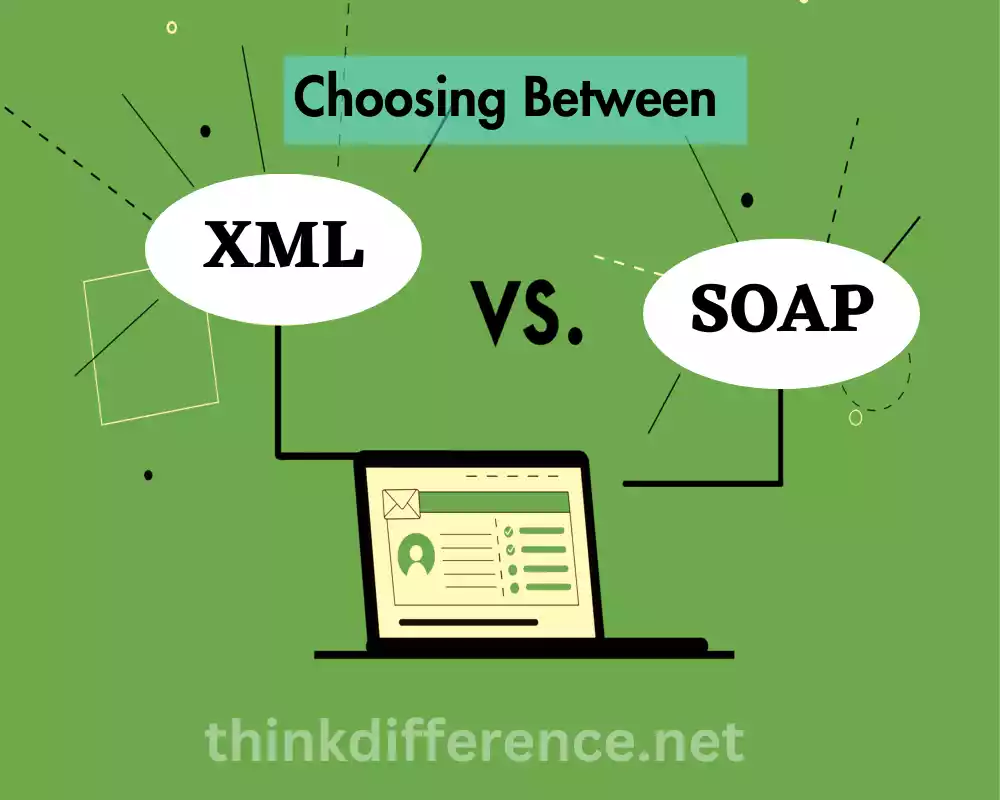
Here are a few pointers before you make a final decision:
- Data Complexity and Structure: XML is well-suited for representing structured and hierarchical data. If your application requires complex data structures or requires adaptable formats, XML might be an appropriate solution. SOAP utilizes XML as its message format and is particularly useful for structured data exchange in web services.
- Interoperability and Standards: SOAP has been widely adopted as a standardized protocol for communication between applications and platforms. If your system needs to interact with other systems that use SOAP or if you require the formal contract-based communication provided by SOAP’s WSDL, SOAP may be the preferred choice. XML, being a versatile data format, can also support interoperability, but it may require additional effort to define and adhere to specific standards.
- Performance and Efficiency: XML can be verbose compared to other data formats, such as JSON. If your application has strict performance requirements or operates in resource-constrained environments, choosing a more lightweight and compact data format like JSON may be more suitable. It’s worth noting that performance optimizations can be implemented for both XML and SOAP to improve their efficiency.
- Ecosystem and Tooling: Consider the availability of libraries, frameworks and tooling for XML and SOAP in your chosen programming language or platform. Ensure that there is adequate support for parsing, generating, validating and processing XML and SOAP messages. Evaluate the maturity and community support of the tools available.
- Industry and Standards Compliance: Different industries may have specific requirements or standards that dictate the use of XML or SOAP. For example, in certain regulated industries like finance or healthcare, XML-based standards are prevalent, and adherence to these standards may be necessary.
- Future Scalability and Evolution: Consider the long-term scalability and evolution of your application. Assess whether XML or SOAP aligns well with your future integration needs, system architecture and potential technology advancements. Additionally, take into account emerging technologies and trends in the industry, as they may impact the relevance and adoption of XML and SOAP.
The choice between XML and SOAP depends on the specific needs of your application, including data complexity, interoperability requirements, performance considerations, ecosystem support, industry standards and future scalability. It’s also worth considering hybrid approaches where XML and SOAP can coexist with other data formats and communication protocols based on the specific use cases within your system.
Conclusion
XML and SOAP have been instrumental in enabling seamless data exchange across diverse platforms and systems. XML’s flexibility and SOAP’s standardization have paved the way for robust web services and APIs. As technology progresses, new data interchange formats may emerge, but XML and SOAP will remain crucial in legacy system integration and specific use cases.
Understanding the strengths and limitations of these technologies allows developers to make informed decisions about their implementation.

